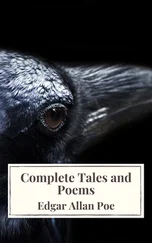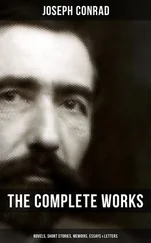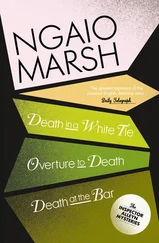Inca Expansion and the Spread of Chagas’ Disease
Medical anthropologists can interpret how sociocultural factors contribute to the parasitic cycle of Chagas’ disease. Inca civilization illustrates this. Often compared to the Romans, Incas are famous for their conquests, empire building, architecture, and treatment of diseases (see Lumbreras 1974, Rowe 1946, and Zuidema 1964). These achievements influenced the transmission of T. cruzi and the treatment of its syndromes. The Inca empire extended from Chile to Ecuador, and from the Pacific Ocean into the Amazon. An extensive road network was established between colonies. During the empire’s height in the fifteenth century several hundred ethnic groups and thousands of communities exchanged resources, ranging from parrots of the Amazon in Ecuador, Peru, and Bolivia to salt from the high Atacama desert in Argentina and Chile.
When Incas expanded their empire from Cuzco to Bolivia, Chile, and Ecuador, T. infestans rapidly spread to communities across the Andes, providing an example of biotic exchange following “civilizing” forces. T. infestans became a commensal species (such as mice), living in close proximity to humans. Houses provided proximity to animals and humans and a protected habitat from the cold. Unknowingly, Incas transported vinchucas in llama caravans throughout the empire.
During the expansionist fifteenth century in Incaic America, Pacha Kuteq Inca Yupanki, the ninth king, conquered the Chanka, a powerful neighboring kingdom, and his son, Tupac Inca Yupanki, extended the empire from the Mapuche line in central Chile to Quito, Ecuador, as well as westward to the coast and eastward to the Amazon. The Inca empire was named Tawantinsuyo for four triangulated sections that were formed with the bases of the triangle at Cuzco, the apexes extending to the four directions: two long-sided isosceles triangles pointing north and south, and short-sided triangles pointing east and west.
The Inca present a unique example of how a mountain civilization was able to incorporate many ecological zones and cultures within a continent. During the Incario there was a massive exchange of people, cultures, resources, animals, plants, insects, and parasites. Only within the last twenty years has there been a comparable ethnic and biotic exchange within the Andes.
The Andes are characterized by their verticalityas one travels up a mountain, the width of the ecological band decreases. Climbing an Andean mountain, one finds tropical leafy plants, monkeys, and parrots in the lower valleys; corn, vegetables, and fruits on the lower slopes, potatoes, oca, and barley on the central slopes; alpacas, llamas, and bunch grass on the higher slopes; and mossy and furry plants on the tundra near the summit. Andean communities live, farm, and herd in these zones. They then exchange resources with others, often relatives, from communities at another level. For example, highland Aymara herders raise alpacas and llamas at 15,000 feet whose meat they exchange to Quechua farmers at lower levels who raise potatoes, and to other farmers at still lower levels who grow corn.
The Incas moved mitmakuna, colonists, from each of the several hundred ethnic groups to different regions of the Andes as well as to different elevations. These colonists expanded the groups’ access to products throughout the Andes. The Incas profited politically by being able to better control each group, now weakened at home by the exportation of members and by the settlement within the ethnic group of Inca administrators. The ethnic groups were not entirely unhappy, however, because mitmakuna opened up the possibility of exchanging resources with many different regions. The Incas demanded portions of all produce for the state, to be stored in warehouses and used in times of famine and war. An elaborate system of roads, runners ( chasquis ), quipus (knotted cords used to keep records), warehouses, and military posts linked the communities with the capital, Cuzco, and each other.
Chagas’ disease increased with this exchange of people and resources that had previously been restricted to smaller levels of the region. The Incas brought herbalists and ritualists to Cuzco from the Lake Titicaca region for medicinal purposes. Especially recognized, the Kallawayas, now located in Province Bautista Saavedra, Charazani, Bolivia, carried the chair of the Inca king and practiced herbal medicine in Cuzco and other parts of the Incario (Bastien 1987a, Oblitas Poblete 1968, 1969, 1978). (Kallawaya treatments for Chagas’ disease are discussed in the next chapter.)
Inca Housing and Settlement
Architecture and housing affected the infestation of vinchucas in Cuzco. Inca rulers divided Cuzco into two parts, called upper and lower Cuzco; each was further divided into clans of pure-blood Incas, half-breed people, and foreigners (see Zuidema 1964). The clans were matrilineal, with matrilateral cross-cousin marriages between the clans. Clustered gatherings of houses and their inhabitants provided T. infestans (harboring T. cruzi ) ample opportunities to hide and feed.
The imperial city of Cuzco provided many havens for insects. Imperial houses and temples were built of tightly fit dressed stone. Mortar and plaster were little used, providing openings at cornices and foundations for vinchucas to enter. Roofs consisted of wood primarily that preferred sites for T. infestans to nest. Houses in the suburbs were constructed of field stone, clay, or adobe. They were rectangular with gabled and thatched roofs. The rooms were built around a courtyard where animals were kept. The proximity of animals to sleeping quarters facilitates the transmission of T. cruzi from infected animals to humans through the bite of vinchucas.
Spanish Conquest and Vinchucas
The sequel to the Inca empire was the Spanish conquest in 1532, partially facilitated by civil war and diseases. As Tupac Yupanki lay dying in Quito about 1527, he was informed of white-skinned people with hair on their faces and shining clothes riding on big animals, they having appeared around Panama. Tupac Yupanki established a dual government. One ruler, Atawallpa, wanted total control, attacked the other, and imprisoned him after five years of civil war. Francisco Pizarro met Atawallpa on the plains of Cajamarca in 1532, slaughtered thousands of Incas, held Atawallpa ransom for gold payments from Cuzco, and then beheaded him after receiving the shipment of gold.
It is not certain to what extent Chagas’ disease debilitated the Incas, but from the evidence of this disease among Inca mummies one can assume that at least some Incas suffered from chronic Chagas’ disease. Chronic Chagas’ disease is considered by some to be the greatest hindrance to development in Latin America today.
After the Spanish conquest of the Incas, Andeans were weakened with diseases of Old World origin (see Dobyns 1963). Smallpox, measles, malaria, yellow fever, bubonic plague, and undoubtedly several other diseases were unknown in the pre-Columbian New World (Ashburn 1947; Crosby 1976). Andeans were especially stricken by smallpox, which was accompanied by respiratory ailments, possibly measles and tuberculosis. These diseases are considered virgin-soil epidemics because Andeans had no previous contact with them and were immunologically almost defenseless.
An epidemic of the 1520s in Peru was caused by either measles or smallpox. Smallpox is the prime suspect. It was a major blow to the Inca empire because it killed Wayna Capac, the Inca emperor, and as many as one-half of the population (Crosby 1972:52). “When Wayna Capac died,” wrote Cieza de León (1959), “the mourning was such that the lamentation and shrieks rose to the skies, causing the birds to fall to the ground. The news traveled far and wide, and nowhere did it not evoke great sorrow.” Conquistador Pedro Pizarro (1921) recorded that had “Wayna Capac been alive when we Spaniards entered this land, it would have been impossible for us to win it, for he was much beloved by all his vassals.” Andeans of the Inca empire told Pedro Pizarro that they had no acquaintance with smallpox in pre-Columbian times (see Crosby 1972:62, note 38). Smallpox is only one of the epidemics that decimated Andean populations. The pre-Columbian population for the central Andes has been estimated at 6 million inhabitants; by 1650 the population had decreased to 1.5 million (see Dobyns 1966:397-98).
Читать дальше












